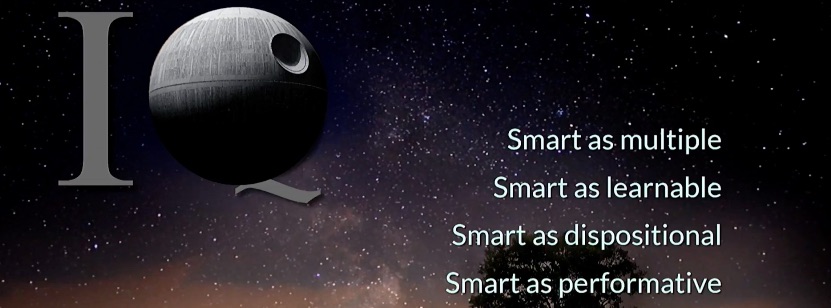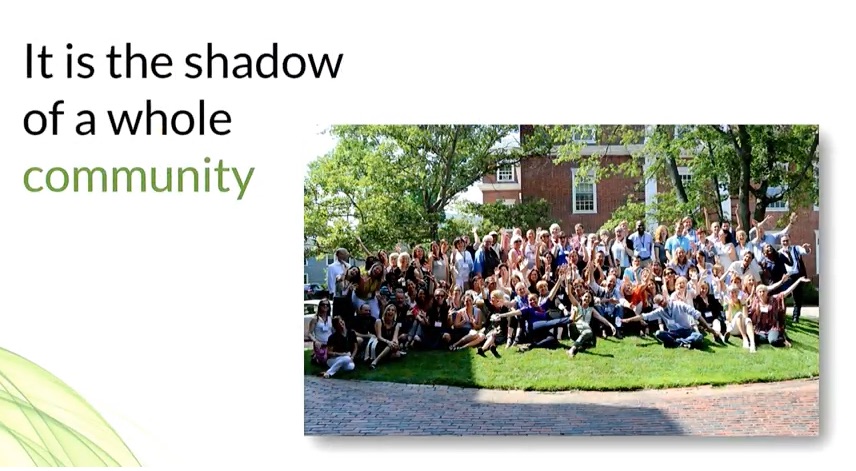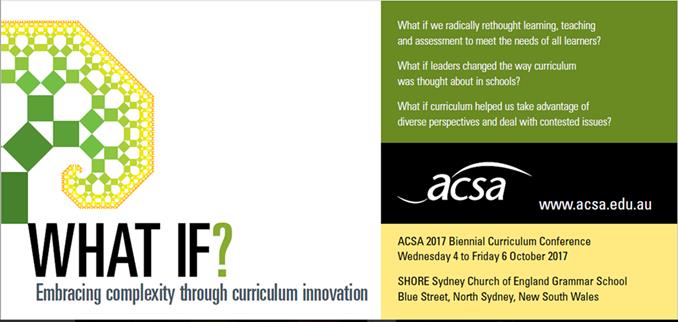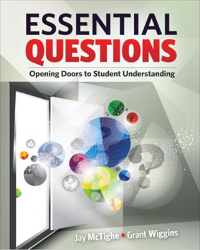Contemporary learning environments might be best understood when viewed as a complex mix of environments and overlapping social networks. Learners fluidly move between social networks and their learning is influenced by their participation within and across these physical and virtual networks. Understanding how mobile, global and virtual social networks influence our interpretation of socio-cultural theories of learning might allow us to better understand the interplay of settings and contexts within which learning occurs and in doing so better understand how learning may be facilitated.
The socio-cultural perspective on education has its origins in the work of Lev Vygotsky (Göncü & Gauvain, 2012) and is an approach which considers the individual and their interactions with the social environment as central to understanding the processes of learning. Learning is said to be that which occurs through interaction between the individual, and all that their biology brings to the table and the social context in which learning occurs. Such an approach shifts our thinking about learning and development as processes contained and constrained within the individual’s biology to a more diverse understanding that incorporates the social context within which all learning is seen to occur. For educators, this approach encourages us to look at the learning environment and the social context in which the learning we design for our students occurs and 'presents a fuller and more accurate picture of children’s learning and development.' (Göncü & Gauvain, 2012 p126) Sociocultural, and the in some ways related social-cognitive approaches build upon earlier research that focused on the individual as the unit of development but seek to explain the differences which were observed across groups and contexts which could not be explained without a wider frame of reference.
By expanding the frame of reference to include the social context within which learning and development occurs a more complex image emerges of the interactions and processes which are at play. Vygotsky's (1978) research shows how interactions between the child and their social environment enables learning. He explores the gap between what a child can do now independently and that they can do with assistance. Termed the 'Zone of Proximal Development’(ZPD), this is the gap into which teachers hope to move their students (Vygotsky, 1978). Teaching strategies such as formative assessment (Black & Wiliam, 1998) seek to identify where the ZPD is for students and then provide appropriate learning situations which scaffold student’s growth through this zone. Effective teaching will provide a context that allows students to achieve success on learning initially pitched within this zone with guidance while moving towards internalisation of new learning evidenced by success when the scaffolds are removed. It is with this process in mind that we develop teaching programmes and curriculums.
Given the multitude frames which might be used to inform our understanding of what culture is, (Jary & Jary, 1991) how it is constructed and how it shapes and is shaped by interactions with individuals and groups it unsurprising that there are multiple perspectives upon the nature of socio-cultural learning. This complexity is expanded when comparisons are made between socio-cultural perspectives and social-cognitive perspectives are considered. Emerging from the work of Albert Bandura (1977) social-cognitive theories like socio-cultural approaches are concerned with the learning that occurs within societies and the cross-cultural differences which such perspectives reveal. 'In contrast, social cognitive researchers have devoted considerable attention to the role of social variables in learning, how motivational processes affect learning, and how social cognitive principles can be best applied to enhance students’ learning from instruction.’ (Schunk, 2012 p117) A further differentiator is evident in the significance given to vicarious learning or learning purely through observation of others that is present in social-cognitive theory but is not evident in socio-cultural theories which emphasise translation of observations of others into action or learning by imitation of the observed behaviours. Social-cognitivists would show that learning can be acquired without the imitation phase.
For teachers, social-cognitivist approaches shine a light on the factors which result in motivation towards learning. Learning is said to be enhanced when individuals have positive self-efficacy for learning (Bandura 1977). Motivational theories such as self-determination theory (Ryan & Deci, 2000) and attribution theory (Weiner, 2004) point to factors such as autonomy, purpose and mastery (Ryan & Deci) and locus of control (Weiner - internal/external stable/unstable controllable/uncontrollable) as key factors which influence engagement and perceptions of success. In social-cognitive theory these factors are described as acting upon the individual through changes in levels of self-efficacy. When social aspects of learning are accounted for the provision of a safe, supportive and nurturing learning environment is broadly considered to be significant (Tirri, 2011)(Marzano & Pickering, 1997). The complexity of social environments within which learning occurs presents challenges to educators looking to manage the environment in which learning occurs. Students are less likely to engage with challenging learning in settings where they feel unsafe or believe that their attempts to engage are likely to be judged negatively or where the rewards available are low. (Atkinson, 1957) (Dweck & Legget, 1988) (Wigfield & Eccles, 2000).
A shifting emphasis on what is valued as the outcome of formal education places greater emphasis on the capacity of individuals to be creative collaborators. In ‘Participatory Creativity’, Edward Clapp (2017) details the importance of collaborations between individuals in a form of collective agency derived from the work of Bandura. Collective agency acknowledge the role of the individual within efforts of a greater collective. Informed by this perspective and Cskiszentmihalyi’s view of creativity as a product of social systems, Clapp builds a model of creativity that results from the collective efforts of society and focuses on the processes through which ideas evolve rather than a more traditional view which attribution of a product to an individual. Creativity in such a model is like learning in socio-cultural perspectives a social phenomenon.
Significant differences in the socio-cultural setting within which the individual experiences learning can be shown to account for varied outcomes. An example of this can be seen in the exposure to language which occurs in different settings. Hart & Risely (2003) show that a five-year-old child growing up in a home with parents categorised as professionals would have been exposed to 45 million words. By contrast a child growing up in a working-class family would have been exposed to 26 million words and only 13 million if growing up in a lower-class family. This gap in exposure must be seen as more significant than a deficit in vocabulary within a socio-cultural perspective that emphasises the development of language as a critical component for development in general. According to Vygotsky, children learn to use language regulate their psychological functions (Göncü & Gauvain, 2012) and language is an essential tool in the scaffolding and modelling of learning that occurs both within schools and other environments in which learners learn. This gap in exposure presents significant equity challenges for educational systems.
Traditionally the socio-cultural setting in which learning and development occurs has been defined by the physical settings in which the learner is situated and the culture that is attached to that. Relationships between the individual and their immediate family play an important role in the early years of learning, as the child grows the social context in which they learn widens and peers, teachers and the wider community begin to play a part. As the child interacts with a growing number of social contexts they are able to draw upon an expanding set of models and observations as they learn to regulate their behaviour and adopt (and modify) the cultural norms required for adult life (Göncü & Gauvain, 2012). In more recent times this social context has become increasingly difficult to define.
Through a variety of factors, such as globalisation, increased mobility and technology enabled networks, the individual is increasingly found to exist simultaneously across multiple cultures and societies (Leander, Phillips & Taylor, 2010). These multiple contexts and cultures bring to the learner new challenges and require learning of multiple norms along with the pressure to activate the appropriate norms for each context.
The once clear boundaries of the social context of learning and development is increasingly blurred and stretched by technologies and networks. In seeking to understand how this space influences learning and development it is necessary to consider the individual, the interacting social networks (physical and virtual) and the technology as agents which influence development. At best the experienced reality is ‘complicated’ (Boyd, 2014) as the individual within the virtual world is able to fluidly shape and reshape both identity and context. 'When teens engage with networked media, they’re trying to take control of their lives and their relationship to society. In doing so, they begin to understand how people relate to one another and how information flows between people.' (Boyd, 2014 p92) The blurring of social contexts further complicates the learning environment experienced by young people when it is recognised that they spend much of their time living within a culture that the adults in their world know little about. The norms, language, symbols, signs and meanings of the virtual worlds may be borrowed or appropriated from the physical world but are often wildly misinterpreted when decontextualised. Further still access to resources, knowledge and tools derived from technologies and their networked lives are viewed with suspicion in many traditional learning environments thus bringing artificial barriers to learning and de-contextualising the skills learned in school from those valued in the ‘real world’.
From the research of Vygotsky, Bandura and others across socio-cultural and socio-cognitive perspectives we have been provided with a theoretical tool kit with which to better understand the interplay of the individual, society and culture. As we move further into an age dominated by technology and networks it is incumbent on all those with an interest in learning and development to look at the interplay of forces which act upon the individual. By seeking to understand the influences that physical and virtual contexts have on learning we can begin to imagine a model of education which makes best use of the diverse environments in which our young people are immersed.
By Nigel Coutts
Atkinson, J. W. (1957). Motivational determinants of risk-taking behavior. Psychological Review, 64, 359–372.
Bandura, A. (1977). Social learning theory. Englewood Cliffs, NJ: Prentice Hall.
Black, P., & Wiliam, D. (1998), Inside the black box: Raising standards through classroom assessment, King’s College, London: School of Education.
Boyd, D. (2014) It’s complicated: The social lives of networked teens. New Haven: Yale University Press.
Csiksgentmihalyi, M. (2013) Flow: The psychology of happiness’ and creativity: The psychology of discovery and invention. New York; Harper Perennial.
Clapp, E. (2017) Participatory creativity: Introducing access and equity to the creative classroom. New York: Routledge
Dweck, C., & Leggett, E. (1988). A social cognitive approach to motivation and personality. Psychological Review, 95, 256–273.
Göncü, A., & Gauvain, M. (2012). Sociocultural approaches to educational psychology: theory, research, andapplication. In K. R. Harris, S. Graham, and T. Urdan (Editors-in-Chief). APA Educational Psychology Handbook: Vol.1. Theories, Constructs, and Critical Issues, 125-154.
Hart, B., & Risley, T. (2003). The early catastrophe: The 30 million word gap by age 3. American Educator 27(1), 4– 9.
Jary, D., & Jary, J. (1991) Collins dictionary of sociology; second edition. Glasgow: Harper Collins.
Marzano, R. & Pickering, D. (2009) Dimensions of Learning: Trainers manual 2nd Edition. USA: ASCD Publications.
Ryan, R., & Deci, E. (2000). Self-determination theory and the facilitation of intrinsic motivation, social development, and well-being. American Psychologist, 55(1), 68-78.
Schunk, D. (2012). Social cognitive theory. In K. R. Harris, S. Graham, and T. Urdan (Editors-in-Chief). APA Educational Psychology Handbook: Vol.1. Theories, Constructs, and Critical Issues, 101 -123.
Tirri, K. (2011) Holistic school pedagogy and values: Finnish teachers’ and students’ perspectives. International Journal of Educational Research 50 pp159-195
Vygotsky, L. S. (1978). Mind in society: The development of higher psychological processes. (M. Cole, Trans. & Ed., V. John-Steiner, S. Scribner, & E. Souberman, Eds.). Cambridge, MA: Harvard University Press. (Original work published 1934)
Wigfield, A., & Eccles, J. S. (2000). Expectancy-value theory of motivation. Contemporary Educational Psychology, 25, 68–81





























